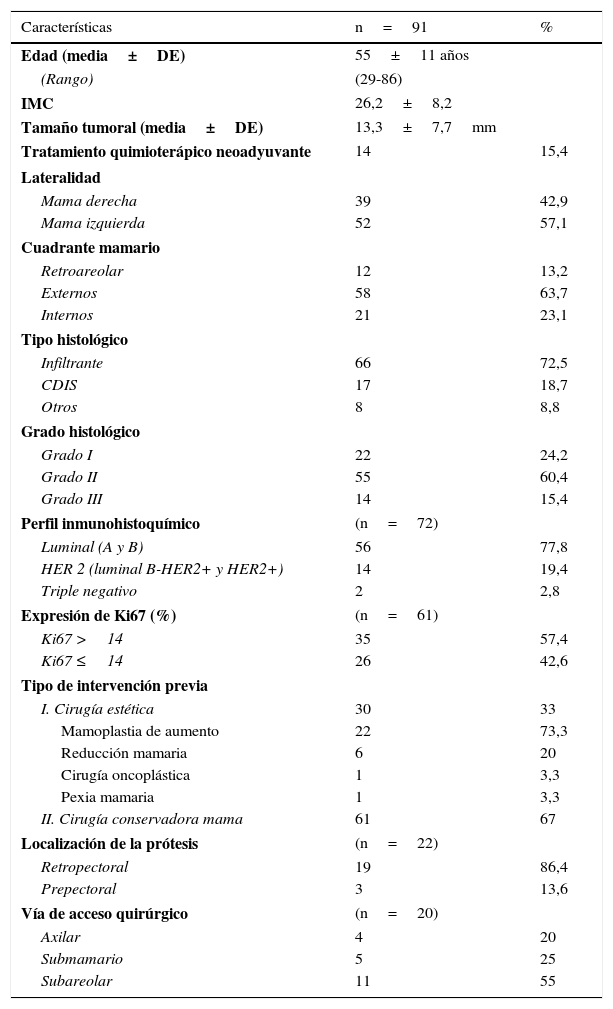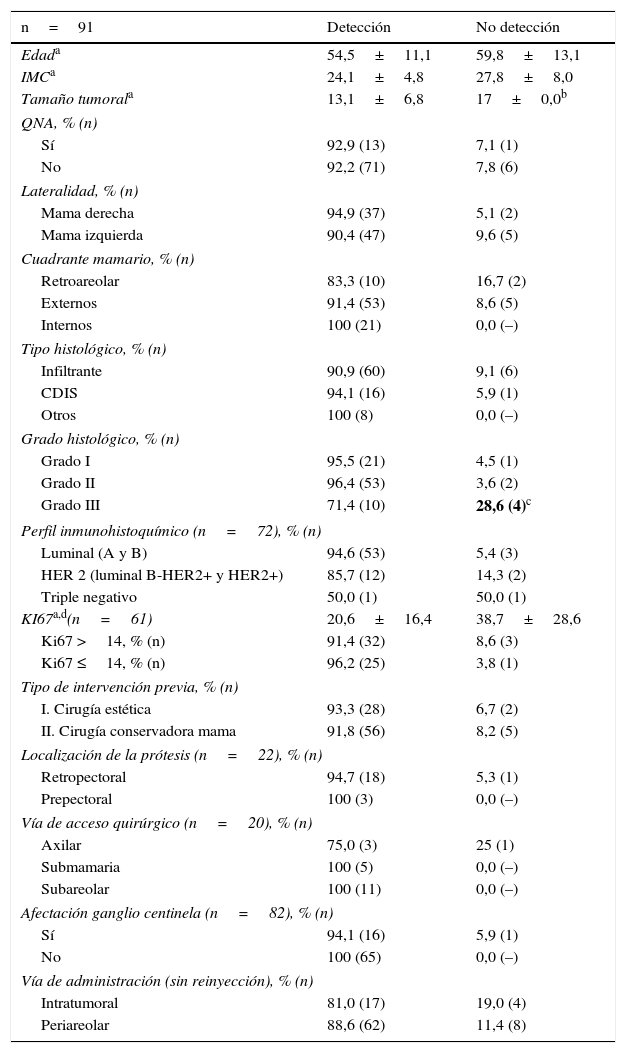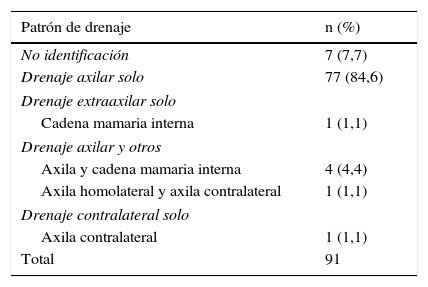Revisar la aplicabilidad de la biopsia selectiva del ganglio centinela en pacientes con cáncer de mama y antecedente de cirugía mamaria previa, y examinar los factores que podrían influir en la detección del ganglio centinela.
Material y métodosRevisamos retrospectivamente la biopsia selectiva del ganglio centinela en 91 pacientes con cáncer de mama dividiéndolas en 2 grupos según el antecedente quirúrgico de la mama: cirugía estética en 30 (grupo I) y conservadora en 61 (grupo II). Se realizó linfogammagrafía prequirúrgica tras inyección intratumoral en 21 casos y periareolar en 70. Se analizaron los patrones de drenaje linfático y la detección global del ganglio centinela según características clínicas, patológicas y quirúrgicas.
ResultadosLa detección global del ganglio centinela en la linfogammagrafía fue del 92,3%, con un 7,7% de drenajes extraaxilares. La detección fue similar en el grupo I (93,3%) y grupo II (91,8%). En 2 pacientes (2,2%) detectamos ganglios centinelas en la axila contralateral, estando afectados en el estudio anatomopatológico. El porcentaje de no detección del ganglio centinela en la gammagrafía fue del 7,7%. Se encontró una proporción de no detección significativamente mayor en tumores con mayor grado histológico (28,6% grado III, 4,5% grado I y 3,6% grado II).
ConclusiónSe puede realizar la biopsia selectiva del ganglio centinela en pacientes con antecedente de cirugía mamaria previa, pero serían necesarios más estudios para valorar la influencia en la detección del ganglio centinela de diferentes aspectos en este escenario clínico. Un elevado grado histológico se relaciona significativamente con una menor detección.
The aim of this study was to review the feasibility of selective sentinel lymph node biopsy in patients with previous surgery for breast cancer, as well as to examine the factors that may interfere with sentinel node detection.
Material and methodsA retrospective review was performed on 91 patients with breast cancer and previous breast surgery, and who underwent sentinel lymph node biopsy. Patients were divided into two groups according to their previous treatment: aesthetic breast surgery in 30 patients (group I) and breast-conserving surgery in 61 (group II). Lymphoscintigraphy was performed after an intra-tumour injection in 21 cases and a peri-areolar injection in 70 cases. An analysis was made of lymphatic drainage patterns and overall sentinel node detection according to clinical, pathological and surgical variables.
ResultsThe overall detection of the sentinel lymph node in the lymphoscintigraphy was 92.3%, with 7.7% of extra-axillary drainages. The identification rate was similar after aesthetic breast surgery (93.3%) and breast-conserving surgery (91.8%). Sentinel lymph nodes were found in the contralateral axilla in two patients (2.2%), and they were included in the histopathology study. The non-identification rate in the lymphoscintigraphy was 7.7%. There was a significantly higher non-detection rate in the highest histological grade tumours (28.6% grade III, 4.5% grade I and 3.6% grade II).
ConclusionSentinel lymph node biopsy in patients with previous breast surgery is feasible and deserves further studies to assess the influence of different aspects in sentinel node detection in this clinical scenario. A high histological grade was significantly associated with a lower detection.
Artículo
Comprando el artículo el PDF del mismo podrá ser descargado
Precio 19,34 €
Comprar ahora










